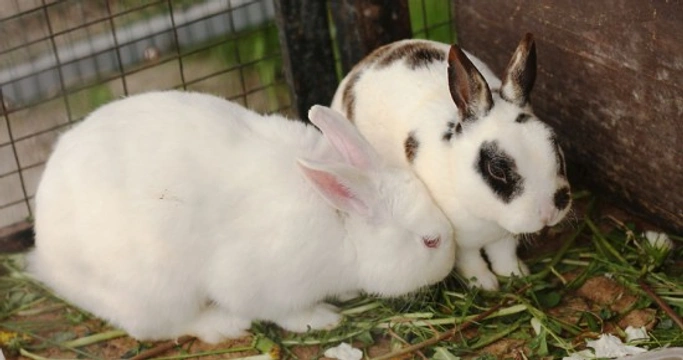
The Proper Cleaning of Rabbit Hutches
Cleaning out your pet rabbit or guinea pig's hutch certainly isn't something to look forward to, in fact it can be a real chore. It is however a necessary evil since the build up of urine and droppings over time will result in breeding bacteria that could cause illnesses in your pet, and if you have the cage indoors then leaving it unclean is unhygienic for you too. By cleaning your pet's cage out regularly and correctly then you will have a happy pet and a happy family. If you have yet to buy a hutch then keep in mind that although wooden hutches are the most popular, they also soak up urine and are therefore more difficult to clean. You can now buy hutches that are made of wood but have inbuilt easy clean floors. Rabbits and guinea pig's which are kept indoors generally live longer because they are not in contact with as many diseases, germs or cold weather that can negatively effect their health. A shed or garage is certainly preferable to the garden.
Rabbit hutches aren't particularly difficult to clean out, however they are a not something you will look forward to, so this article aims to give you few time saving ideas to implement in addition to advice on cleaning products and regime.
How Often Should I Clean The Hutch Out?
Rabbit hutches need regular cleaning with a thorough clean once per week. A thorough clean means cleaning and disinfecting the cage and replacing all bedding and hay. In addition to this you should aim to remove droppings everyday if they build up. The process of cleaning can be made much less tedious and easier for daily dropping removal by using a litter tray. Training your rabbit to use the litter tray shouldn't be difficult because rabbits naturally go to the toilet in one area anyway. When you first place the litter tray into the cage, move as much littered bedding and droppings into the tray so the rabbit then starts to use the litter tray. There are various litter pellets and products to choose from with various benefits and advantages, however newspaper is also fine and the cheapest option. The only downside to newspaper is that it doesn't control odour. Cat litter is not suitable for rabbits.
Rabbits and guinea pigs may leave fruit and vegetables uneaten that they aren't so keen on, which over a few days will quickly become rotten and mouldy. Remove uneaten vegetables every couple of days.
What Bedding Should I Use?
If your hutch has a wooden floor then it is best to line the whole cage with a thick layer of newspaper. On top of this place a layer of wood shavings throughout and in the bedroom area add a decent amount of hay for your rabbit to make a bed. Do not choose wood shavings that contain pine or cedar as these can be damaging to your pet's health. Despite being a well known cause of respiratory problems in pets this type of wood shaving is still widely available and it is important that you check the packaging before making a purchase. Remember that in winter time your pet will need more bedding and may even need bringing indoors on the colder nights.
Homemade Cleaning Solutions
You can save money by making a non-toxic cleaning solution at home, suitable for cleaning all cage types and bowls. To make this you will need linseed oil and white vinegar. Add one part linseed oil to two parts vinegar and place it into a spray bottle.
What Causes Algae In Water Bottles?
If you rabbit's water bottle is turning green with algae then it is importantly you thoroughly scrub it clean and disinfect it with hot water and vinegar. If you cannot remove the algae then throw the bottle away and buy a new one. Algae builds up in stagnant water that is not changed daily, so to avoid this problem ever occurring simply change your rabbit's water everyday.
A good way to ensure you clean out your pet on a regular basis is to establish a routine. Find a time of day that suits you and change the water and the litter at this time each day. Likewise decide on the day of the week that you will do a thorough clean out and make sure you stick to it. To make the task seem less daunting rope in your partner or children to lend a helping hand. Hopefully you will now feel confident that you know how to clean out your pet's hutch properly.



